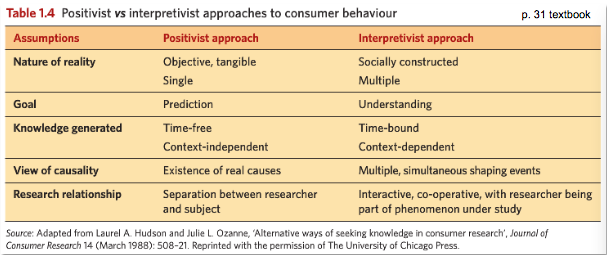Consumer behaviour, a brief introduction.
Consumer behaviour is the study of processes involved when individuals or groups select, purchase, use or dispose of products, services, ideas or experiences to satisfy needs and desires. It is also important to look beyond the transaction or act of buying and understand all the issues that underpin/influence the consumer; before, during and after a purchase. One must understand what happens in the mind of consumers before a decision making process even begins or is triggered, then drill down the decision making process itself, and finally look at outcomes and consequences of this whole cycle plus how it repeats.
Why is consumer behaviour important?
Advertising is very expensive, and unless you know your consumers you're incurring the risk of waisting large amounts of money.
Brand building is another important factor - using the data found you can essentially design products, brands or services that are likely to appeal to consumers to a greater extent.
There are 3 main reasons that marketers and organisations need to understand consumer behaviour, these are:
- To allocate and optimise resources
- Identify and serve needs better than competitors (gain competitive advantage)
- To stay profitable and survive in the market
An example of one company that understands their customers particularly well is Apple; they are known for going above and beyond expectations, they know everything about their customers and what they might need and cover that constantly - which clearly must come from a know how.
The two alternative views on consumer behaviour
Firstly is the traditional view, which looks at positivism. This view basically emphasises the objectivity of science and the consumer as a rational decision maker.
Next is the emerging view that looks at Interpretivism. Here there is an emphasis on the subjective meaning of the consumer's individual experience and the idea that any behaviour is subject to multiple interpretations, rather than one single explanation.
Below is a table (extracted from a consumer behaviour text book) outlining different approaches between the two views.

The difference between marketers and consumer perspectives
This can generally be broken up into the following three sections:
Pre-purchase issues
Consumer perspective: How do consumers decide that they require a product/service?
What are the best sources of information to learn more about alternative choices?
Marketer perspective: How are consumer attitudes towards products/services formed and/or changed?
What cues do consumers use to infer what products are inferior to others?Purchase issues
Consumer perspective: How is the experience when acquiring a product/service - stressful or pleasant?
What does the purchase say about it's consumer?
Marketer perspective: How do situational factors, such as time pressure or store displays, affect the consumers purchase decision?Post-purchase issues
Consumer perspective: Does the product/service satisfy the consumers need/perform its intended function?
How is the product eventually disposed of, and what are the environmental consequences of this act?
Marketer perspective: What determines whether a consumer will be satisfied with a product and whether they will buy it again?
Does this person share their experience with the products with others and affect their purchase decisions?


